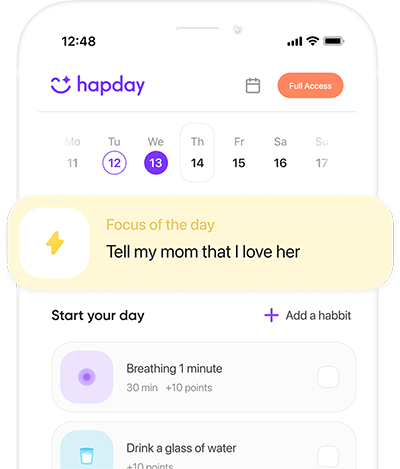Do you ever feel like society’s moving so fast you’ve barely got time to breathe? Meditation—it’s not just some fad or a buzzword. It’s turning out to be a life raft for those navigating the murky waters of psychological issues, especially childhood trauma. Think about it, this ancient practice has stood the test of time, probably because it works. Young women, especially Gen Z and Millennials, need to know just how meditation can be a game changer in recovering from the shadows cast by early trauma.
Now, let’s not kid ourselves—childhood trauma is no small fry. It’s like that uninvited guest that overstays its welcome, influencing our emotional and physical health long into adulthood. Heard of the National Child Traumatic Stress Network? They’ve laid it all out there—about one in four kids in the U.S. faces trauma before they hit sweet sixteen. This nasty stuff can cause anxiety, depression, and even mess with your social skills or health. That’s where meditation steps in, like a gentle guide through the storm, helping to remodel our brains and promote some serious healing.
Table of Contents
- The Science Behind Meditation and Trauma
- Types of Meditation for Trauma Healing
- Integrating Meditation into Daily Life
- Meditation and Professional Therapy: A Complementary Approach
- The Role of Self-Compassion in Healing
- Conclusion
The Science Behind Meditation and Trauma
Let’s get all science-y for a second. There’s a heap of research showing meditation doesn’t just soothe the soul but also rewires our brain. Like, for real. A Harvard study (and they’re not messing around) found that mindfulness meditation can actually beef up the gray matter in your hippocampus, which is like an emotional control center and memory hub, while calming down the amygdala, the little stress gremlin in your head.
This brainy makeover can be a lifesaver for those wrestling with childhood trauma. Meditation encourages neuroplasticity—fancy term for the brain’s ability to adapt and change—which helps in processing those nightmare memories and easing symptoms of anxiety and depression. It’s like giving your emotional toolkit an upgrade.
Types of Meditation for Trauma Healing
There’s no one-size-fits-all when it comes to meditation. When tackling childhood trauma, some types can really hit the mark. Mindfulness Meditation, Loving-Kindness Meditation, and Body Scan Meditation are often recommended.
Mindfulness Meditation
Here’s the deal with mindfulness meditation—you focus on the now. No judgment, just awareness. Trauma survivors find this immensely useful as it allows them to gently face their repressed thoughts. Psychological Science published something interesting—mindfulness can seriously dial down PTSD symptoms. Impressive, right?
Loving-Kindness Meditation
Imagine sitting there, eyes closed, and just… wishing yourself and others well. That’s Loving-Kindness Meditation. For someone bound by past trauma, this can work wonders. It nurtures self-acceptance and trims those guilt and shame branches. Stanford found it boosts positive vibes and social ties, usually a hard feat for those haunted by trauma.
Body Scan Meditation
In Body Scan Meditation, you’re essentially tuning into each part of your body. It’s a great way to reconnect when you’ve felt out of touch due to trauma-induced dissociation. Clinical Psychology Review highlights that this method cuts down anxiety and boosts awareness. Neat, huh?
Integrating Meditation into Daily Life
Ready to give this a go? Remember, it’s a marathon, not a sprint. Consistency and a sprinkle of patience are key:
- Start Small: Kick-off with short, sweet sessions and gradually crank it up.
- Create a Dedicated Space: Find your zen corner—a distraction-free zone just for you.
- Use Guided Meditations: Apps like Headspace are awesome when you’re starting, especially for trauma-focused meditations.
- Be Patient: Healing is a hike, not a hop. No pressure, no judgment.
- Seek Support: Maybe join a meditation circle? Sharing helps.
Meditation and Professional Therapy: A Complementary Approach
Just a heads up—meditation isn’t a magic wand. It complements professional therapy. Therapists specializing in trauma can offer tailored advice that you just don’t get otherwise. CBT, EMDR, and Somatic Experiencing—these work well alongside meditation for a more rounded recovery.
The Role of Self-Compassion in Healing
A touch of self-compassion can go a long way toward healing. Research says it lowers stress and depression levels. Meditation pinky-promises to enhance self-compassion through gentle, non-judgmental thought and emotion awareness.
Conclusion
So, what’s the takeaway? Meditation is like that Swiss army knife of self-care. It not just tweaks your brain for better mental health but also helps discover that elusive balance. For younger women—the Zennials out there—embracing meditation could be a turning point on the road to reclaiming your peace.
Want to dive into meditation and self-care? Unearth resources designed for you by downloading the Hapday app. Start crafting your wellness journey today!
References
- National Child Traumatic Stress Network
- Harvard University Study on Mindfulness Meditation
- Psychological Science Journal on Mindfulness and PTSD
- Stanford University Study on Loving-Kindness Meditation
- Clinical Psychology Review on Body Scan Meditation


I love how this article highlights the importance of meditation in addressing childhood trauma! It’s amazing how a practice that’s been around for centuries is finally getting the recognition it deserves in mental health. Meditation has helped me tremendously, especially the mindfulness aspect. It really teaches us to live in the moment, which is crucial when dealing with past traumas.
While I appreciate the focus on meditation, I do wonder if it’s enough on its own. I mean, childhood trauma is serious business. Sometimes it feels like meditation might be a nice band-aid but not necessarily a cure. What about incorporating therapy as well? Would love to hear others’ thoughts on balancing these approaches!
This post resonates so much with me! It’s refreshing to see how meditation can actually rewire our brains and aid in healing from childhood trauma. I’ve been trying body scan meditation lately, and it’s incredible how connected I feel to my body again after years of feeling disconnected due to past experiences.
I totally agree! Body scan meditation has been a game changer for me too. It really helps you tune into what your body needs and release those pent-up feelings.
‘Self-compassion’—that’s such an important aspect that often gets overlooked in healing journeys! Meditation helps nurture that self-love we all need, especially when we’re hard on ourselves due to past traumas. Can anyone share their favorite self-compassion meditations?
‘The science behind this is fascinating! The idea that mindfulness can actually change our brain structure makes me believe even more in its power. But honestly, how do we get started? Sometimes it feels overwhelming just to find the right kind of meditation for personal trauma.
‘Starting small is key! Even just five minutes a day can make a difference. Plus, there are so many great apps out there that guide you through different types of meditations tailored for trauma healing.
‘I find Loving-Kindness Meditation incredibly powerful! Sending positive thoughts to myself was really hard at first because of guilt and shame from my past experiences. But over time, it feels like I’m nurturing my inner child more and more.
‘It’s such an emotional experience at first, but it gets easier with practice! It’s amazing how much kindness towards ourselves can shift our perspective.
I absolutely love this article! Meditation has changed my life for the better, and I can’t believe more people aren’t talking about it. It’s like a breath of fresh air in a world that feels suffocating sometimes. The science behind it is fascinating too! I’m excited to share these insights with my friends who could really use some mindfulness in their lives.
While I understand the benefits of meditation, I can’t help but feel skeptical about its ability to solve deep-rooted issues like childhood trauma. It feels like a band-aid on a much larger wound. Sure, it may help some people, but we need more concrete solutions that address the core problems rather than just calming techniques.
This article provides valuable insights into how meditation can aid in trauma recovery. The connection between mental health and practices like mindfulness is well documented. It’s important to integrate such approaches into therapy for those struggling with past experiences. A multi-faceted approach seems to be the key to healing.
I appreciate your perspective, CuriousCat99! However, I’d argue that while meditation is beneficial, it should never replace professional therapy for serious trauma cases. It’s crucial that individuals also seek support from trained professionals who can guide them through their healing journey effectively.
Honestly, all this talk about meditation sounds a bit too good to be true. It seems like one of those trends that will fade away as quickly as it came. I mean, how can sitting quietly really help someone process intense emotional pain? There’s no substitute for real-life action and confrontation of problems.
‘Meditation is a life raft’? More like it’s an inflatable pool toy floating in the ocean of life! Sure, relaxation is great and all, but let’s be real—if you’re drowning from childhood trauma, you need more than just a floatie! A good therapist would do wonders instead of just sitting cross-legged and saying ‘om’.
‘Mindfulness Meditation’ sounds fancy but isn’t that just another way of saying ‘don’t worry’? Seriously though, if people can find solace in focusing on the present moment amidst chaos, then kudos to them! However, we should also acknowledge that for many individuals dealing with trauma, this practice may require guidance from experienced professionals.
‘Loving-Kindness Meditation’—what’s next? Wishful thinking? While I see merit in positive affirmations, there needs to be practical steps taken alongside these meditative practices. Trauma doesn’t vanish with kind thoughts alone; we need actionable methods paired with emotional healing tools for genuine progress.
“It’s all about balance,” they say! And what better way to balance life’s craziness than through meditation? I’ve found that even just ten minutes a day helps clear my mind and improves my mood significantly. If young women are struggling as mentioned in the article, they should definitely give meditation a try!
I think it’s great how this article highlights the importance of self-compassion when dealing with trauma! This aspect often gets overlooked when discussing mental health strategies. Everyone deserves kindness towards themselves during their healing journey—it’s crucial for long-term recovery!
The mention of apps like Headspace is spot-on! Technology has made meditation accessible for many busy lives today; it’s like having a personal coach right at your fingertips! Just remember folks: using tech tools doesn’t replace genuine self-reflection or seeking deeper emotional support when needed.